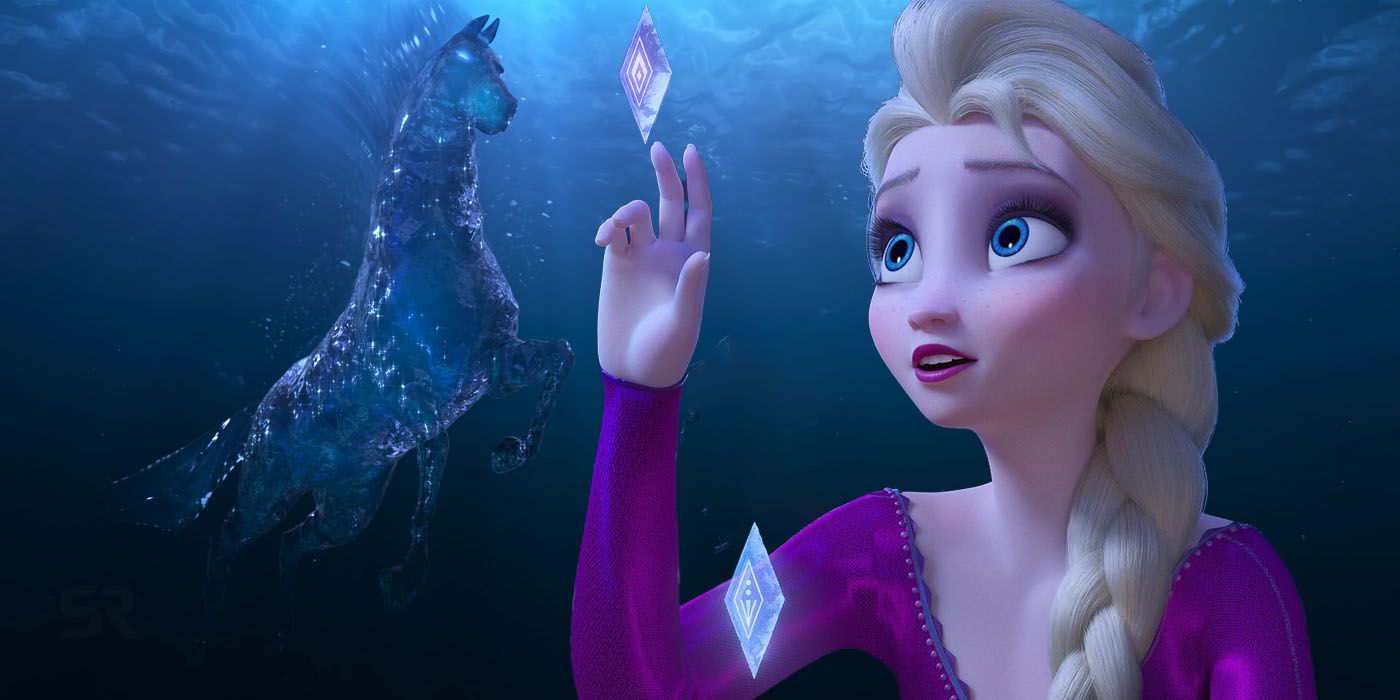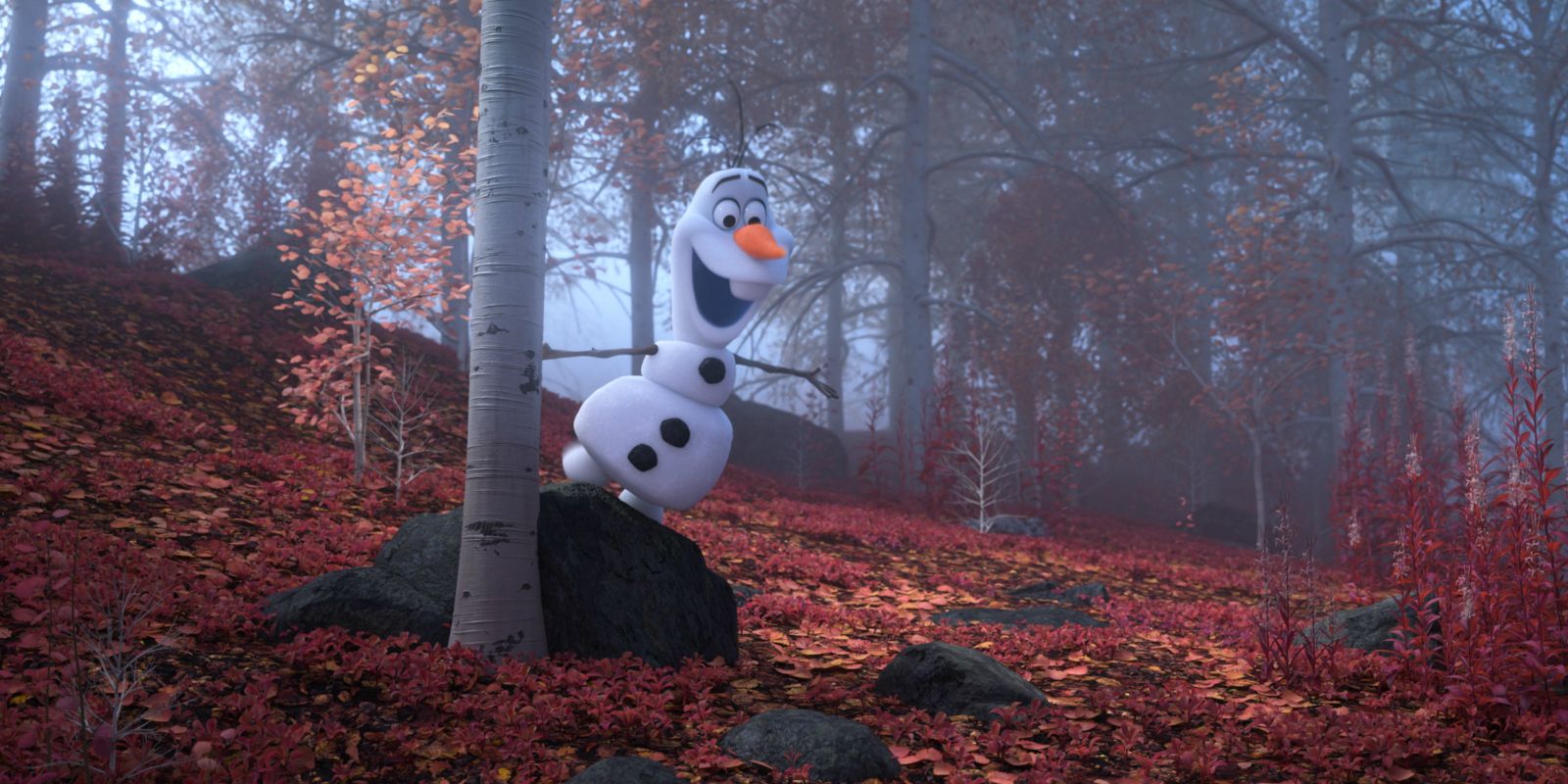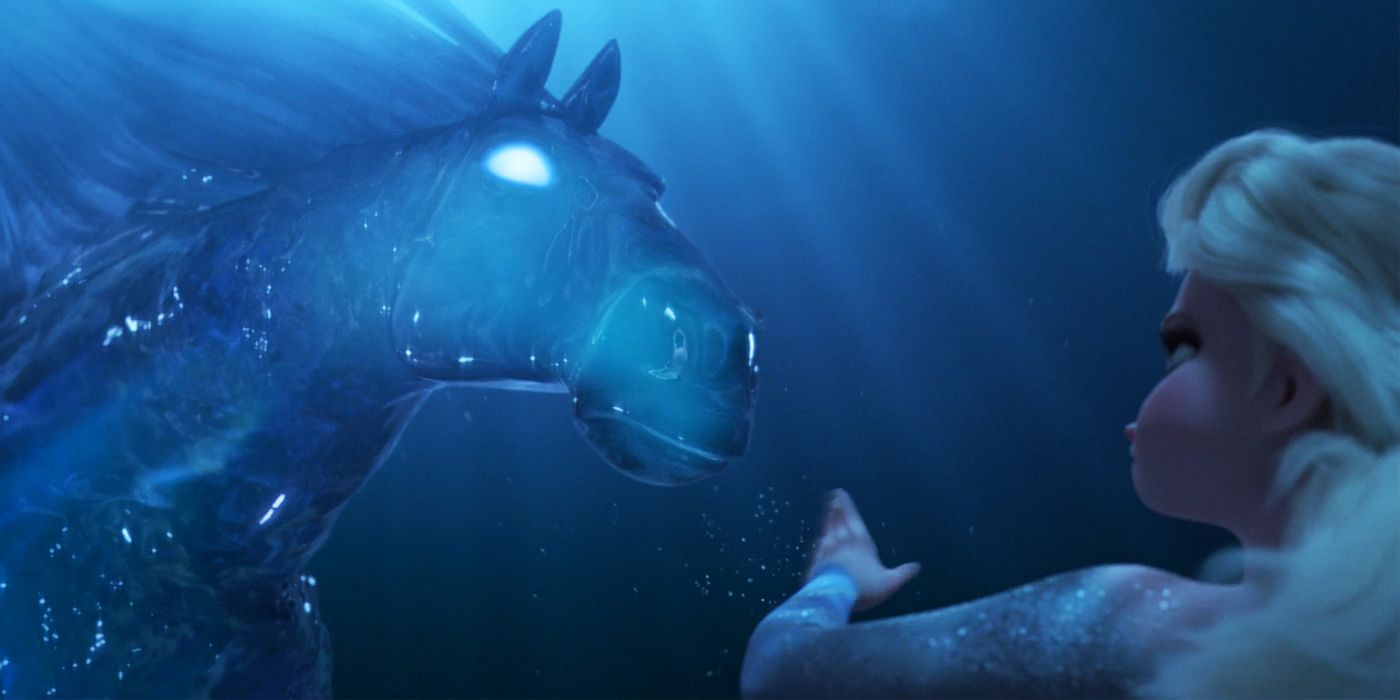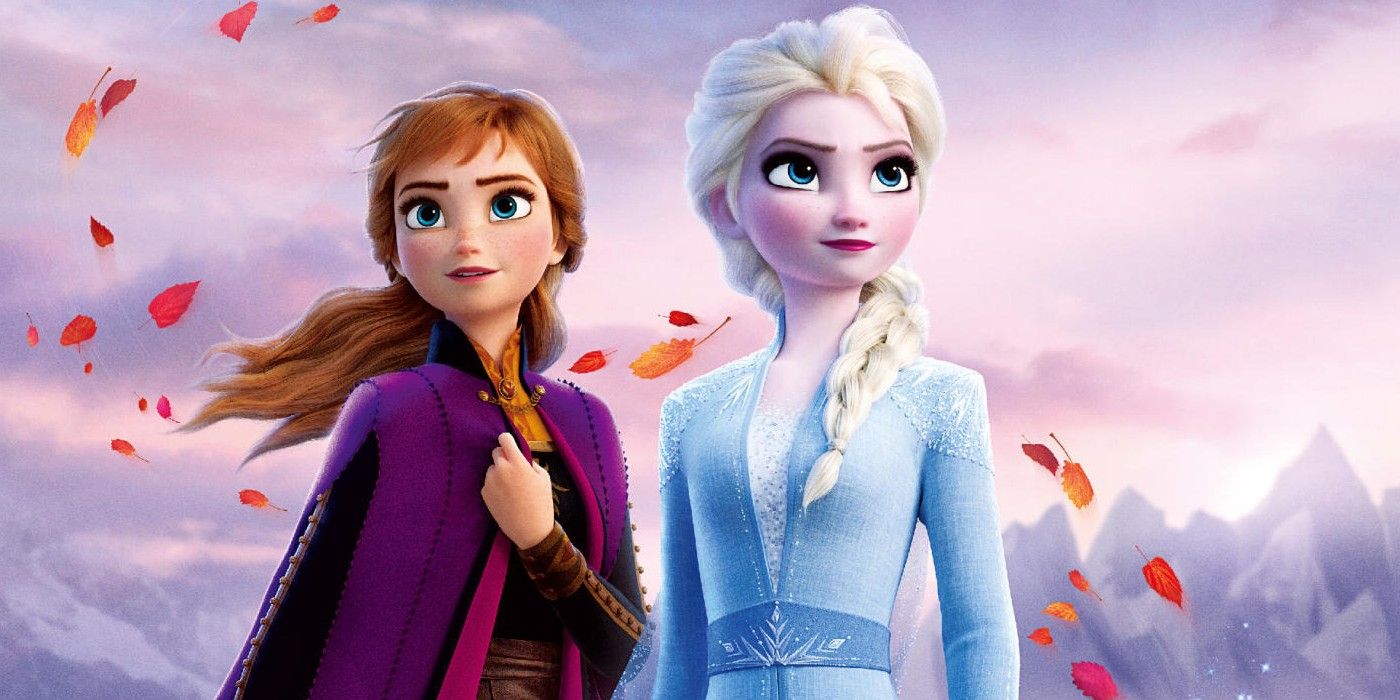Frozen 2 expands the franchise's mythology in fantastic new ways. Both films are intimate character journeys, exploring the stories of sisters Anna and Elsa, but Frozen 2 is all about how the siblings fit into the wider world. Elsa abandons her refrain of "the past is in the past" in order to learn the truth about her parents, and unlock the secrets of magic itself.
In thematic terms, Frozen 2 is something of a mash-up of different legends, philosophies, and fairytales. Some of the concepts are still inspired by Hans Christian Andersen's The Snow Queen, with a dash of Norse and Scandinavian mythology added into the mix, and an unexpected amount of Greek philosophy as well. The most surprising concept is the idea of "water memory," which was proposed by charismatic French scientist Jacques Benveniste in 1988 and is still claimed to justify homeopathy.
Here's your guide to the expanding world of the Frozen franchise, the magical new locations, and the new and complex mythology that's been integrated into the story of Anna and Elsa.
The Enchanted Forest and the Runestones
Elsa's quest to explore her past takes her into the Enchanted Forest, a place where magic had previously run rampant. It seems that Elsa's grandfather, King Runeard, had feared magic and decided that it should be destroyed. As such, he decided to trick the peaceful Northuldra, who live within the Enchanted Forest at peace with the magical world. He corrupted the natural environment by constructing a massive dam, and in so doing interfered with the patterns of magic within the Enchanted Forest. The Northuldra began to suspect the truth, and as a result King Runeard instigated a conflict. The bloodshed angered the spirits, and they separated the Enchanted Forest behind an impenetrable bank of mist, and then withdrew from interacting with the Northuldra and the Arendellians.
Frozen 2 reflects the classical Greek philosophy of dividing the world into two categories: wilderness and the built environment. The Western world has traditionally been shaped by Plato, who famously stated that he was "devoted to learning; landscapes and trees have nothing to teach me—only the people in the city can do that." By the 1400s, this had developed into the belief that the natural environment needed to be tamed and restrained as a sign of progress, and King Runeard's dam represents that kind of philosophy. Over the last 200 years, however, popular culture has been transformed by the more romantic views of William Wordsworth and Henry David Thoreau, who propounded the importance of a harmonious relationship with nature, and celebrated the importance of wilderness. Anna and Elsa come to accept that perspective, and Anna ultimately destroys the dam in order to restore the natural system. Appropriately enough, a Hans Christian Andersen Easter egg confirms that Frozen 2 was probably happening at the time Thoreau and Wordsworth were growing in influence.
The Enchanted Forest is bordered by four massive Runestones, designed in a manner reminiscent of those constructed by Vikings at the side of graves. Frozen 2 blurs its mythology, however, by making these Runestones monuments of power, reminiscent of standing stones in Anglo-Saxon lore. Each of the Runestones is marked with a single symbol of magical power, dedicating it to one of the four elemental spirits. Ancient Nordic peoples did indeed believe the runes were powerful, and it was popularly thought they had been a gift from the throne of Odin himself. To use a rune without proper training was to risk invoking the wrath of the gods; as one Viking poet put it, "Let no man carve runes to cast a spell, save first he learns to read them well." In the same way, Elsa's spontaneous generation of icy runes across Arendelle awakens the spirits and invokes their wrath.
Elsa & the Magical Spirits
Frozen 2 follows classical Western philosophy by dividing the world into four elemental categories: Earth, Air, Fire, and Water. Each of the four elements has at least one spirit, with Earth as an exception because it has an actual tribe of Earth Giants. All of the elementals are lifted from popular mythology, and the most notable is the Nokk, the water spirit. Many ancient cultures view the sea as a symbol of death, something that takes but never gives back, and in Germanic lore the Nokk is a playful and mischievous spirit that delights in drowning people. In the same way, in Frozen 2 the Nokk attempts to drown Elsa until she successfully tames it. She has a much more positive relationship with the fire spirit, a Salamander named "Bruni", who loves to have his fire extinguished by cold. He's inspired by the Aristotlean myth that a Salamander is a creature of fire that could not be burned to death, which was disproved by Pliny the Elder in the First Century but remained common in European thought through to the Renaissance.
"Gale" is the wind spirit, an unpredictable and playful force that seems to enjoy interacting with others. Although "he" can manifest in spectacular form, Gale's portrayal seems to be strongly influenced by the Greek wind god Zephyrus. He's the gentlest of the Greek wind gods, and the messenger of spring. Finally, Frozen 2 also has a tribe of Earth Giants, initially foul-tempered and murderous. These are common creatures in fairytales.
Frozen 2 reveals that the magical world sought to establish a new relationship with humanity, and Elsa and Anna were born to serve as a bridge between the two. Elsa is the fifth spirit, and at first the other elemental spirits are angered at her presence in the Enchanted Forest, but she either wins them over or tames them. The film artistically represents Elsa's own rune as the heart of a snowflake, with the others on the different sides.
Ahtohallan & The Source Of Magic
The Enchanted Forest isn't Elsa's final destination; she's forced to cross the stormy Dark Sea in order to reach the icy land of Ahtohallan. This is described as the source of all magic, and it appears to be (very) loosely inspired by the Snow Queen's Ice Palace at the North Pole in Hans Christian Andersen's fairytale. The magic of Ahtohallan seems to be centered around the pseudoscientific theory of "water memory," which claims that water retains a memory of what it had previously contained; this is a fairly modern idea, ascribed to by proponents of homeopathy. The elemental spirits are able to tap into this magic independently, with both Gale and Elsa creating water and ice avatars that represent memory, but it is at its strongest at Ahtohallan. The experience of this mystical land is almost too much for Elsa, and she initially drowns in the memories it presents, transforming into an ice form herself.




